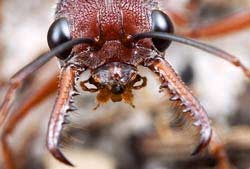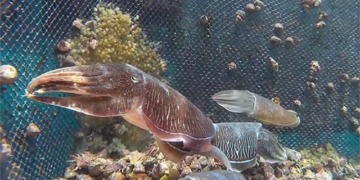 Uninvited guests at any picnic are inevitably ants. Their swift movements demonstrate their effectiveness and significance, hinting at the reasons for their ubiquitous presence across the globe.
Uninvited guests at any picnic are inevitably ants. Their swift movements demonstrate their effectiveness and significance, hinting at the reasons for their ubiquitous presence across the globe.
Ants have not always dominated the Earth. Scientists estimate that modern ants first evolved around 120 million years ago. However, fossils indicate that during this period, ants were not the dominant insect group that they are today.
It wasn’t until about 60 million years later, when certain ant species adapted to the world of flowering plants and diversified their diets, that these organisms gained ecological advantages. Since then, they have successfully thrived across the planet.
Ants have become dominant due to various strategies in work and foraging. Even their appearances and habitats vary significantly from species to species. From the tiny Oligomyrmex atomus, measuring just one millimeter, to the larger Dinoponera species over three centimeters long, they showcase a range of colors from yellow, black, to red. Living in deserts, ants do not shy away from tropical forests and wetlands—anywhere except the coldest and highest places on Earth.
“Almost all human languages have a word for ants“, says Philip Ward, an entomologist at the University of California, Davis.
Many ant species feed on carbohydrate-rich flowering plants. Some carpenter ants build well-defended nests around tree trunks to fend off other insect species and protect their food supplies.
Ants living in dry, hot regions have developed various strategies to survive prolonged droughts by storing food. Honeydew ants even use their own bodies as storage units.
Some species engage in battles for food. The thick antennae on armed ants can withstand ongoing conflicts with others. Trap-jaw ants, Odontomachus, snap their powerful jaws so quickly that you can hear the click. Slave-raiding ants abduct larvae from nearby colonies.
Within the colony, females handle all tasks, while males exist primarily as small, winged reproductive drones. In each species, the division of labor depends on the age and sex of each individual.
Unlike other social insects such as bees and wasps, most ants lack wings and have evolved a complex chemical communication system for effective terrestrial interaction.
“Loss of wings has created limitations in foraging. They must gather food on the ground, making communication on the ground very important“, Ward explains.
These chemicals are used for mating, alerting, and locating food sources. When a queen ant is ready to mate, in some species, she climbs to a high point, raises her abdomen to the sky, and releases a pheromone to attract male attention.
Ants also release pheromones from a gland in their mouths if something disturbs their nest.
“The success of ants lies in their ability to use social behavior to optimize food collection“, Wild states. “They develop communication systems for the fastest interaction. That’s why you encounter countless ants at your picnic“.
T. An


















































